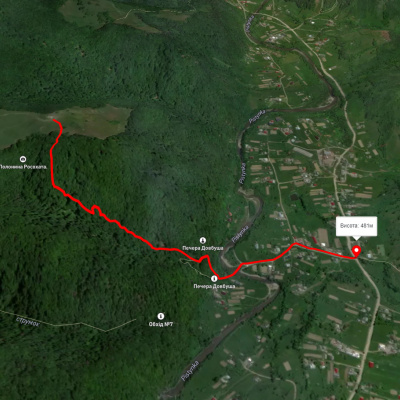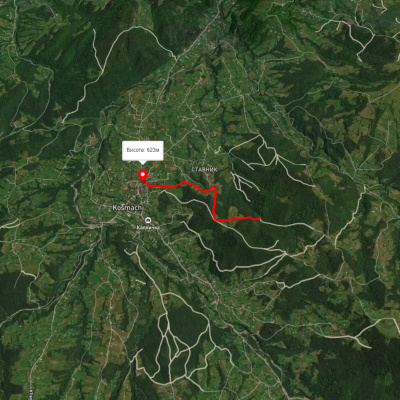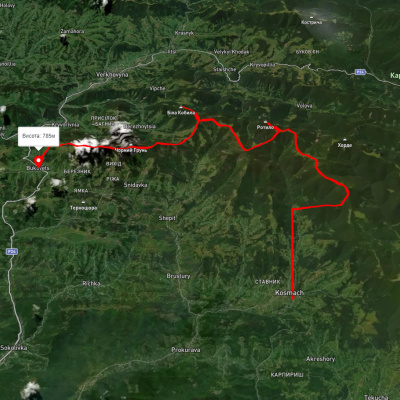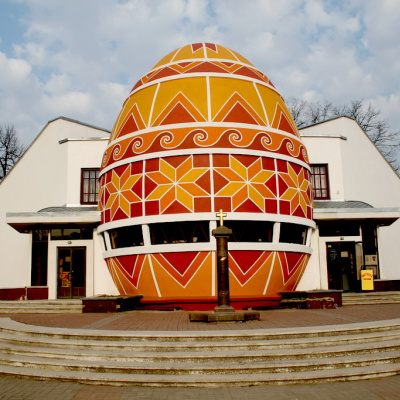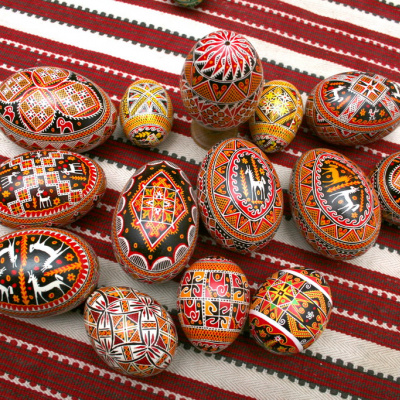Pysanka Museum in Kolomyia
The tradition of egg painting in Hutsul and Pokuttia has a long history, and it is here that the art of Easter egg painting has reached a high level. The collection of Easter eggs in the Kolomyia Museum of Hutsul Folk Art has been formed for many decades, and gradually the idea to create a separate department - the Museum of Easter Egg Painting - came up.
The main tasks of the museum were to be: collecting, preserving, popularizing and exhibiting the works of folk artists, their scientific study and conveying them to the next generations. For several decades, the method of storage and restoration of Easter eggs invented by Kolomyia museum workers remained unknown. Thanks to this, now everyone interested can admire the filigree of Hutsul pysankas.
The pysanka itself is mostly a chicken or goose egg, painted using a specific technology with wax and colored with natural or aniline dyes. The tradition of such painting in the Hutsul region goes back centuries and constitutes a unique collection of miniature paintings whose ornamentation is based on pagan symbols.
Initially, it was planned to locate the museum in former Polish churches in Deliatyn or Stopchativ. Then the regional department of culture came up with the idea of building a museum exposition in Ivano-Frankivsk, in a building that was located in the city park and built in the Hutsul style. But the best option was to open the museum in the Kolomyia Church of the Holy Annunciation, and this was approved by a decision of the executive committee of the city council in August 1983.
Since then, intensive work on the creation of the museum has begun: replenishing the collections, developing the museum's structure and thematic and exhibition plan. The grand opening of the museum took place on October 26, 1987, just in time for the 400th anniversary of the Church of the Annunciation. The church-museum was located at the crossroads of busy highways, which led to active visits to the museum, although it functioned only in the summer.
In 1990, the church was transferred to the faithful, and the museum did not receive permanent premises. Since 1992, the museum of Easter egg painting has been housed in poorly adapted buildings. A new page in the history of the museum began with the construction of a specialized building, the central part of which is shaped like an egg, which is painted like an Easter egg on the outside. The construction took a record time of 90 days.
The museum was inaugurated on September 23, 2000, during the tenth International Hutsul Folklore and Ethnographic Festival in Kolomyia, Ivano-Frankivsk Oblast, which was attended by the President of Ukraine and the Speaker of the Verkhovna Rada of Ukraine.
When governmental and foreign delegations come to Prykarpattia for working visits, it is safe to assume that they will definitely visit the Pysanka Museum. The architectural structure in the shape of the world's largest egg, which is painted like an Easter egg, has become the hallmark of Kolomyia and attracts visitors from all over the world.
The central part of the museum has the shape of a 14-meter-high, 10-meter-diameter Easter egg. The room is made entirely of colored glass, with a total stained glass area of over 600 square meters. The museum's exposition reflects the ornamental, compositional, and coloristic richness of folk polychrome graphics. "Our museum has a tradition related to its specifics and started by the head of the Regional State Administration Mykhailo Vyshyvanyuk. It consists in the fact that when the museum is visited by the first persons of the state, a professional pysanka artist serves them a white chicken egg, melted beeswax, pysankas and offers to make a signature on the surface of the egg. Then she paints it as a pysanka.
On the second floor, there are pysankas signed by famous representatives of Ukraine. The museum's collection already includes Easter eggs signed by the President of Ukraine Leonid Kuchma and his wife Lyudmyla Mykolayivna, the head of the Ukrainian Parliament Ivan Plyushch, Prime Minister A. Kinakh, Vice Prime Minister V. Semynozhenko, former Prime Ministers V. Postovoitenko, V. Yushchenko, Defense Minister O. Kuzmuk, and others.
The museum has been visited by governors of all regions and numerous foreign delegations headed by ambassadors and consuls. The concept of the museum's exposition was developed by director Tkachuk Y., and implemented by Kolomyia artists Vasyl Andrushko and Myroslav Yasinsky.
Currently, the museum has become a kind of temple of art, customs and traditions. The lobby features a sculpture of the Mother of God with a child and embroidered miraculous icons, which create a unique atmosphere for in-depth viewing.
On the second floor, there are collections of more than 6,000 Easter eggs from the largest Easter egg-making centers in Hutsul and Pokuttia, from Ternopil, Lviv, Vinnytsia, Cherkasy, Kirovohrad, Odesa, and other regions of Ukraine, as well as from Poland, the Czech Republic, Sweden, the United States, Canada, Pakistan, and India. Some of the exhibits were made at the turn of the 19th and 20th centuries.
Museum opening hours: 10.00-18.00, except Monday.
More information on the blog >>
Accommodation around Pysanka Museum in Kolomyia:
Nearby hiking trails near Pysanka Museum in Kolomyia:
Які маршрути проходять повз Pysanka Museum in Kolomyia?
Пропонуємо пройти такі туристичні (пішохідні) маршрути через/біля Pysanka Museum in Kolomyia: Шешори - Росохата, Дорога опришків, с. Космач, через г. Ротило, г. Грегіт, г. Біла Кобила до с.Буковець, с. Микуличин, через г. Хорде, г. Ротило до с. Космач, пер. Німчич - Протяте Каміння, ур. Медвежий - г. Куратул
